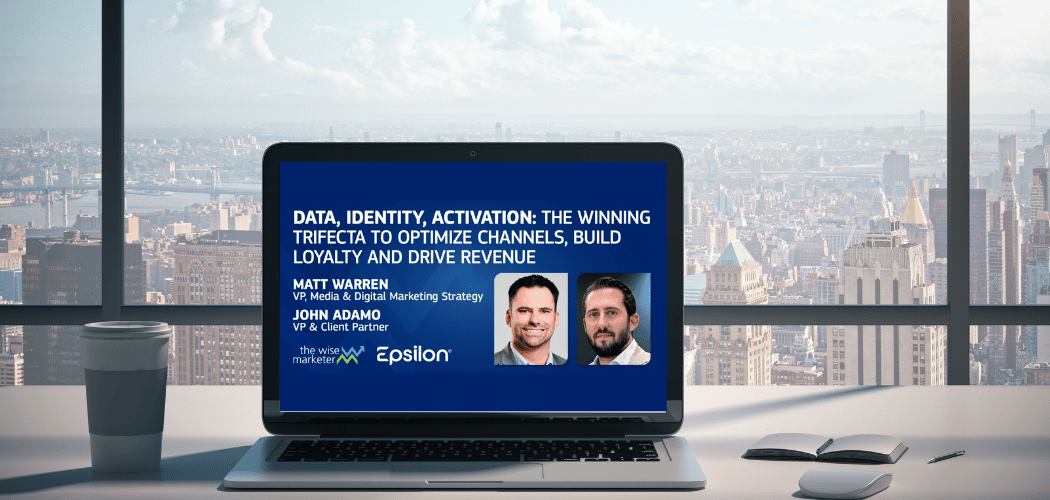Historically Loyalty Marketing has been fueled by behavioral data gathered over time from customer interactions. It serves as the foundation for promotional planning and analytical insights and originates in the “t-logs” of point-of-sale systems used in both online and brick and mortar retail.
By: Tim Collins
“Wise” Marketers know that successful execution of loyalty program strategy requires that behavioral data be supplemented with qualitative data accumulated through member communications. The communications that occur between a brand operating an opt-in style loyalty program and the customers who join the program is a conversational exchange or “dialogue” which enjoys a halo of trust and sets future expectations. When the brand asks questions to customers about their preferences, needs and desires, the responses are immensely more accurate than those gathered through focus groups, exit surveys, and intercept studies.
In short, all of this data (and subsequent insight and program development) is vital to create programs that consumers want to participate in — and stay with.
A short while ago (circa 2018), both types of data that are fundamental to successful loyalty execution were given new names. Traditional behavioral data is now referred to as First Party Data (FPD) and the qualitative data gained through member communications was anointed Zero Party Data (ZPD). To my knowledge, Forrester was the first to float the term Zero Party Data, and the term has gained fame to represent the potential centerpiece of the future of digital marketing. It has also generated uncertainty and confusion in the marketing community.
As the marketing world adapts to the reality of cookies going away, government regulation like GDPR and others are gaining more momentum, and with a growing generation of data-savvy consumers tired of irrelevant, interruptive and pointless marketing, a new urgency has justifiably crept into the system.
So, what is Zero Party Data?
ZPD is defined by Forrester as the “data that a customer intentionally and proactively shares with a brand, which can include preference center data, purchase intentions, personal context, and how the individual wants the brand to recognize them”. Those underlined words are a critical aspect of ZPD.
To add some detail, my view is that ZPD is that which is shared by a customer with a purpose. It is given to a brand knowingly and with the anticipation of enjoying better service and relevancy of response. It’s the notion of dialogue that is important, and the implied expectation of this exchange of intentions, beliefs, and values is key to the success of how ZPD should be used.
You may not be surprised to hear that ZPD is not something that customers are in a rush to share, but when you ask people questions in the context of something that interests them, with a clear understanding of why you are asking, then they become much more open to sharing.
To give the concept some life, here are two examples to help differentiate between Zero Party and First Party Data:
1) Browsing for shoes on a retailer’s website leaves behind a web search history classified as First Party Data. Interacting with a live chat window and providing the context of why you want to buy the shoes is likely to result in ZPD. When you let the brand know that you are going to an important family gathering and ask about building an entire outfit around the shoes, you are providing more personal context — which is the gold of ZPD. Likewise, if you advise that you like the shoes, but your reason for being on the site is purely to purchase a gift for another person, that ZPD tells another story, and requires a different relevant response.
2) Selecting a beverage at a Coca Cola Freestyle dispensing machine simply means you are making choices that are pre-planned by the machine. While this may be a source of market intelligence for Coca Cola., The customer is not sharing the context in which they are making choices, thus it is considered FPD. If the machine asked” How thirsty are you?”, “have you just come from the gym?”, “are you on a diet?”, or “diabetic?” That would be ZPD and might enable the machine to guide the most relevant and desired beverage selection. Consider how much more powerful that ZPD would be to Coca-Cola, from a product innovation perspective.
The key differentiator in classifying data as Zero Party is when a customer is willing to share more in expectation of better service or a more appropriate and personalized product. Context is added and a valuable source of transferrable data remains to inform future encounters. This enables the brand to go deeper and become more contextually relevant with the customer for the current and future interactions.
Why is Zero Party Data so important?
Zero Party Data is important because it constitutes a direct connection with — and richer feedback — from the customer and aggregates to become a unique brand asset. Marketers have enjoyed a nearly unlimited ability to digitally observe the online behaviors of their customers exclusive of a loyalty program or other “by invitation” brand-centric club that requires customers to opt-in. Essentially, marketers have been building customer profiles with only tacit consent from the customer. Yes, while browsing a website, consumers need to agree to the use of cookies (at least since the onset of privacy regulations around the world), but clicking on that button is something most consumers don’t pause to think much about.
The sense of urgency around collecting ZPD comes as the market shifts away from traditional profiling methods. The wheels are already in motion to limit marketers’ ability to track consumer browsing and purchase behavior. If you’re reading this article in Europe, then you know how aggressively the EU has ramped up their legislation in this area.
Some of the changes are here today and others are projected to be in place by the end of 2023. In early 2020, Google announced plans to eliminate third party cookies from its Chrome browser by 2022, a date which has since been extended to the end of 2023. Apple changed its adoption policy for use of Identification for Advertisers (IDFA) with the release of iOS14 to require Apple mobile phone users to opt-in for tracking on an individual app basis.
The changes on the horizon are coming because of one important fact: consumers have grown weary and wary of brands taking their data, commercializing it, and selling it to the highest bidder. For the consumer, this has brought about the noise that we all feel in our inboxes and on our mobile devices. That’s why data privacy regulations have proliferated across the world, even China.
What should you, marketing leaders, do about it?
Some people are saying that marketers need to scramble for a new approach to digital marketing just because the cookie is going away. But the importance of ZPD is not tied solely to marketers being forced into a corner. The more fundamental problem to solve is that the utility of the behavioral data brands has been collecting for years has been thoroughly worn out. Brands have commercialized the data, collaborated with partners on it, applied AI and machine learning to it, used it in personalization engines and more. The result is that our customers are skeptical of these tactics, and we need a better way to build more authentic relationships.
While we need to continue to invest in working with First Party Data, we also need to shift a stronger focus towards Zero Party Data or miss a huge opportunity. The way I see it, marketers have two choices:
1) Keep going down the AI route, gathering more data from disparate sources into a black box and crunching it to spew out massive amounts of offers and promotions that in the end annoy their best customers.
2) Start gathering real world intelligence though a proper dialogue with the customer. Use ZPD to create an emotional tie with customers, build engagement and trust, create brand advocacy, and climb the loyalty ladder.
Focusing more on ZPD is about the only way that brands can recapture the magic that the main street shop owner had with customers in the “good old days” — or in that classic line from “Cheers” — where everybody knows your name.
How do you start on the ZPD path?
The process is simpler than you may believe. Think about what you want to know about the customer that you don’t know today. You might own a fitness facility and see your members doing all sorts of different workouts. The trouble is you can’t ask invasive questions about the “why” behind their workout. You can however create a situation where partners collaborate to gather the ZPD that informs their gym activity.
For example, a healthcare provider in the know about individual health conditions may ask “are you interested in a fitness routine to help with your condition?” Referring insured consumers to a partner fitness provider with the intent to work on any number of conditions can open a meaningful dialogue between customer and the gym. Now the gym owner can have a meaningful conversation about whether someone is in search of a beach body before their spring break trip, getting fit for their favorite sport, or maintaining health to moderate a physical condition. And the notion of working with partners — particular new and fresh partners to bring new value to your consumers — is definitely a growth area for marketers too. We’ll dig into that idea in a future post.
Summary
Marketers should move in the direction of Zero Party Data in realization of an inevitable eventuality. Change has already come, and if you don’t move now, you risk being left out of the digital marketing conversation. More than that, it seems our customers are giving us a golden opportunity to unlock a brand’s ability to serve them better. All that requires is us asking new questions and listening in new ways. Focusing on ZPD is that golden opportunity to take a brand, your brand, to that next level.
There is legitimate fuss about ZPD and the most important first step is to ask your customers about what they want from you. Being consistent and willing to experiment will spark up results.
There will always be a role for second and third party data, as it is powerful to understand how other similar customer groups are behaving. But exercise your second and third party data muscles for other purposes than personalization — that is the potential and promise of Zero Party Data.
Tim Collins, Chief Data & Analytics Officer, Kognitiv and is a proven business developer, consultant, and general manager with experience of working across NA, EMEA and APAC, specialising in Customer Centric retailing, customer analytics, category management and personalised communication for retail and CPG.




